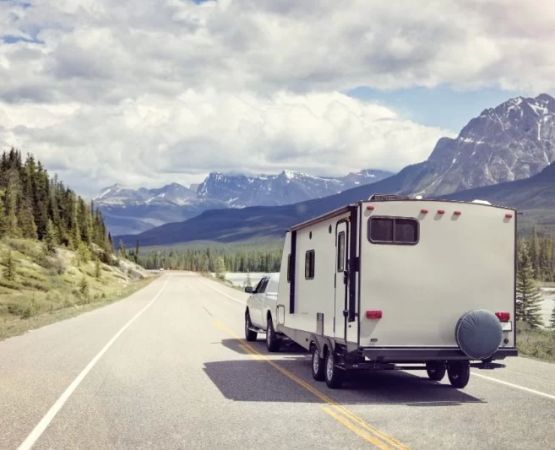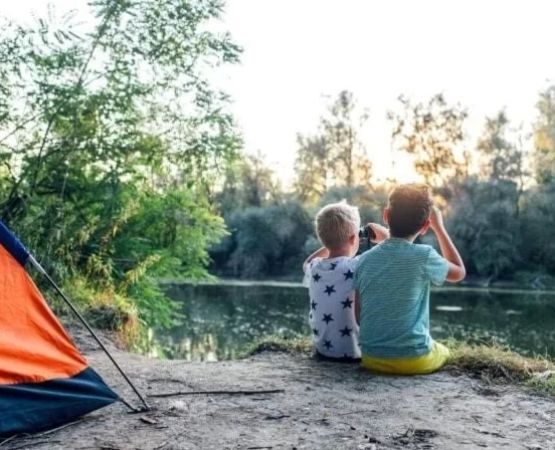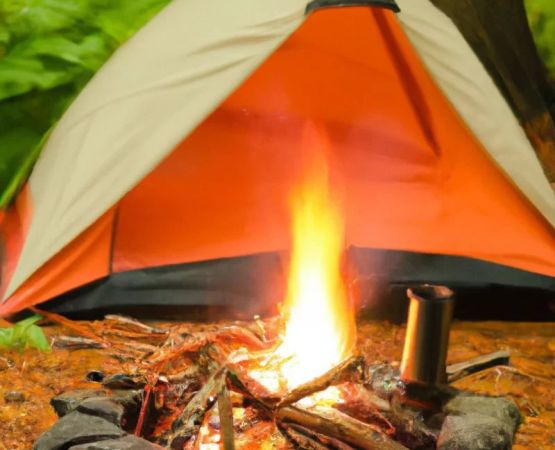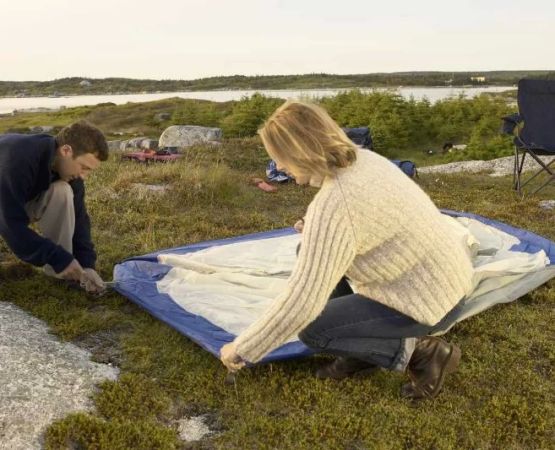- Why Tents Leak in Heavy Rain
- Choosing a Waterproof Tent
- Tent Waterproofing Tips
- Additional Gear for Rain Protection
- Real-Life Camping Experience: Lessons Learned
Why Tents Leak in Heavy Rain
When you're camping in heavy rain, one of the most frustrating issues is when your tent starts leaking. The first sign of this often comes when you feel a damp spot on your sleeping bag or notice water pooling on the floor. So, why do tents leak in heavy rain, and what can you do to prevent it?
Tents can leak for a variety of reasons, but the primary culprit is usually poor waterproofing. All tents are designed with a waterproof coating on the fabric, but over time, this coating can wear off or become damaged, leaving your tent vulnerable to water. Additionally, the seams where the panels of the tent meet can be weak spots that allow rain to seep through, especially if they are not sealed properly. When you combine this with the constant pressure of heavy rain, leaks are almost inevitable.
Choosing a Waterproof Tent
The first step in keeping your tent dry during heavy rain is selecting a high-quality, waterproof tent. Many tents are labeled as waterproof, but not all tents are created equal. To ensure you choose the right tent, look for the following features:
1. Tent Fabric and Coating
Most modern tents use materials like polyester or nylon, which are coated with polyurethane or silicone for waterproofing. Look for tents with a high waterproof rating (measured in millimeters). A tent with a rating of 1,500mm to 2,000mm is generally sufficient for light rain, but for heavy rain, opt for tents with ratings above 3,000mm to ensure your tent stays dry even in the worst conditions.
2. Tent Design
Not all tents are designed to handle heavy rain. Dome-shaped tents, which allow water to run off easily, are often a better choice for wet conditions compared to A-frame tents. Additionally, look for tents with a rainfly, a protective cover that helps keep water from entering the tent.
3. Vestibules and Extra Coverage
A vestibule is a small covered area at the entrance of the tent that helps protect gear from rain. Some tents have extended vestibules, which provide more coverage and can keep your entrance dry even when the weather is bad.
Tent Waterproofing Tips
Even if you have a high-quality, waterproof tent, it's still important to take extra steps to ensure it remains dry in heavy rain. Here are some practical tips for waterproofing your tent:
1. Use a Waterproofing Spray
Over time, the waterproof coating on your tent may begin to degrade. Applying a waterproofing spray can help restore its protective layer. Look for sprays designed specifically for tents, as they will provide long-lasting protection and maintain the breathability of the fabric.
2. Seal the Seams
The seams of your tent are often the most vulnerable points for leaks. Before your trip, use seam sealer to coat the seams of your tent and rainfly. This extra step will ensure that even if the fabric gets wet, water won’t seep through the stitching.
3. Set Up the Tent on a Raised Area
When setting up your tent, always aim for a slightly elevated area to prevent water from pooling under your tent during heavy rain. Avoid setting up in low-lying areas or depressions, as water can quickly accumulate there, leading to soggy gear and an uncomfortable experience.
Additional Gear for Rain Protection
Besides choosing the right tent and waterproofing it properly, having the right camping gear can significantly improve your experience when it rains. Here are a few essential items to consider:
1. Groundsheet or Footprint
A groundsheet or footprint is a piece of material that sits under your tent to protect the floor from moisture and sharp objects. It acts as an additional barrier against water infiltration from the ground and helps extend the life of your tent floor.
2. Tarps and Extra Rainflies
If you’re expecting heavy rain, consider bringing a tarp to place over your tent for extra coverage. This will give your tent an additional layer of protection and help keep the rainfly from getting saturated. Some campers also bring an extra rainfly to provide additional shelter for gear or the entrance.
3. Waterproof Backpack and Gear
Don’t forget to waterproof your gear as well. A waterproof backpack or dry bags can protect your personal belongings from getting soaked in the rain. Store your clothes, electronics, and food in these bags to keep them safe from the elements.Real-Life Camping Experience: Lessons Learned
During a recent trip to the Pacific Northwest, I had the opportunity to camp in heavy rain, and it served as a perfect reminder of how important it is to keep your tent dry. Despite the forecast predicting scattered showers, we were met with constant downpours that tested our gear. We were able to stay dry and comfortable by applying a waterproofing spray on our tent beforehand, using extra rain protection gear, and setting up our tent in a slightly elevated area.
One critical lesson learned from this experience was the importance of maintaining good tent upkeep. It’s easy to neglect tent care between trips, but regular waterproofing and seam sealing can prevent unnecessary discomfort when the weather turns bad.
In conclusion, keeping your tent dry in heavy rain requires a combination of selecting the right tent, applying waterproofing techniques, and using the right gear. By taking these precautions, you can ensure a comfortable, dry camping experience, even when the weather isn’t in your favor.






